Transcription of Chapter 2 Overview of the Health System in Kenya
1 Overview OF THE Health System IN Kenya 13 Chapter 2 Overview of the Health System in Kenya Dr. Richard Muga, Dr. Paul Kizito, Mr. Michael Mbayah, Dr. Terry Gakuruh This Chapter provides an Overview of the Health System in Kenya as a context in which to view the find-ings of the 2004 Kenya Service Provision Assessment (KSPA 2004) survey. It presents information on the background of the Kenya Health Policy Framework and the general organisation of the healthcare sys-tem. Health is defined here in its broad sense, being not only the absence of disease but also general mental, physical, and social well-being. In this definition, the environment in which people live including access to nutritious food, safe water, sanitation, education and social cohesion also determines Health . Historical Background of Kenya Health Framework In 1994, the Government of Kenya (GOK) approved the Kenya Health Policy Framework (KHPF) as a blueprint for developing and managing Health services .
2 It spells out the long-term strategic imperatives and the agenda for Kenya s Health sector. To operationalise the document, the Ministry of Health (MOH) developed the Kenya Health Policy Framework Implementation Action Plan and established the Health Sector Reform Secretariat (HSRS) in 1996 under a Ministerial Reform Committee (MRC) in 1997 to spearhead and oversee the implementation process. A rationalisation programme within the MOH was also initiated. The above policy initiatives aimed at responding to the following constraints: decline in Health sector expenditure, inefficient utilisation of resources, centralized decisionmaking, inequitable management information systems, outdated Health laws, inadequate management skills at the district level, worsening poverty levels, increasing burden of disease, and rapid population growth. The 1999 National Census estimated Kenya s population to be million, of whom 56 percent was less than 20 years of age.
3 In 2004, the population was estimated at million. Life expectancy is on the de-cline, at 48 years for women and 47 for men, and expected to fall further due to the rising incidence and prevalence of HIV/AIDS. There is also a steady decline in the fertility rate, from in 1978 to in 1992, and to in 2003 (but up from in 1998). According to the 2003 Kenya Demographic and Health Survey (KDHS 2003), more married women are using modern contraceptive methods. The preva-lence rate has risen from 18 percent in 1989 to 27 percent in 1993, 32 percent in 1998, and 33 percent in 2003. Overall morbidity and mortality remain high, particularly among women and children. An infant mortal-ity rate (IMR) of 62 in 1993 increased by 12 percentage points to 74 in 1998 and was not significantly different (at 77) in 2003. The under-five mortality rate also rose from 110 deaths per 1,000 live births in the period 1993-1998 to 115 in the 1998-2003 period.
4 Maternal mortality in 2003 was estimated to be 414 maternal deaths per 100,000 live births, which is a decline from the 590 deaths estimated for 1998, but also with large sampling errors, which makes comparing the rates over time uncertain. Malaria is the leading cause of outpatient morbidity in Kenya , accounting for one-third of all new cases reported. After malaria, the most common illnesses seen in outpatient clinics are diseases of the respira-tory System , skin diseases, diarrhoea, and intestinal parasites. Other frequent Health problems include ac-cidental injuries, urinary tract infections, eye infections, rheumatism, and other infections. Combined, these ten leading conditions account for nearly four-fifths of the total outpatient cases reported. This pat-tern has persisted for the past decade. Recurrent outbreaks of highland malaria and widespread emergence of drug resistance strains have aggravated the problem of malaria.
5 14 Overview OF THE Health System IN Kenya In 2003, full immunisation coverage declined to under 60 percent (from 65 percent in 1998 and 78 per-cent in 1993), with the percentage of children receiving no vaccinations at all increasing from 3 percent in 1998 to 6 percent in 2003. The major causes of this decrease in coverage are the declining availability, access to, and quality of public Health services ; the increasing level of poverty is a main underlying factor. In addition, because fewer people are dying from immunisable diseases, the focus on immunisation ser-vices has reduced, and funding has decreased. The challenge facing the government is to reverse this decline. The National Development Plan of 2002-2008 states that the Health care System in its current form (at the time of the National Plan s preparation) does not operate efficiently. Some of the areas targeted in the plan include drugs, personnel, and facility utilisation.
6 Drugs, which account for 14 percent of the Health budget, were deemed to be the most promis-ing area for improvement, particularly in drugs selection and quantification. Staffing norms for key cad-res would be developed for deployment purposes. The plan also calls for formulating a Health manpower policy, to develop and retain human resources in the sector. The First Health Sector Strategic Plan (1999-2004) The development of the first National Health Sector Strategic Plan (NHSSP-I) for the period 1999-2004 was a follow-up to the Ministry of Health s efforts to translate the policy objectives into an implement-able programme (MOH, 1999a). In addition to taking into account past constraints, the document in-volved key stakeholders in the planning process from the start through consultative workshops within the Ministry itself and with other stakeholders, such as development partners, public sector, districts, and provinces, the private sectors, NGOs, religious groups, professional organisations, communities, and us-ers of Health services , as well as teaching and research institutions.
7 The end product thus incorporated the views and priorities of all these groups. Findings of the External Evaluation of NHSSP-I The NHSSP-I was evaluated in September 2004 by an external team of independent consultants. The evaluation found that ..despite having well focused national Health policies and reform agenda whose overriding strategies were focused on improving Health care delivery services and systems through efficient and effective Health management systems and reform, the overall implementation of NHSSP-I (1999-2004) did not manage to make a breakthrough in terms of transforming the critical Health sector interventions and operations towards meeting the most significant targets and indicators of Health and socio economic development as expected by the plan . This may be attributed to a set of factors, most of which are inter-related, such as Absence of a legislative framework to support decentralisation; Lack of well articulated, prioritized and costed strategic plan; Inadequate consultations amongst MOH staff themselves and other key stakeholders involved in the provision of Health care services ; Lack of institutional coordination and ownership of the strategic plan leading to inadequate monitoring of activities; Weak management systems; Low personnel morale at all levels; and Inadequate funding and low level of resource accountability.
8 As a result, the efforts made under NHSSP-I did not contribute toward improving Kenyans Health status. Rather, Health indicators showed a downward trend. Infant and child mortality rates increased. The use of Overview OF THE Health System IN Kenya 15 Health services in public facilities declined; in 1990 there were new consultations per person, while in 1996, there were only new consultations per person. The doctor-to-population ratio declined from the 1980s to the 1990s. The public sector s contributions to healthcare stagnated, going from US$12 per per-son in 1990 to US$6 per person in 2002. In more general development terms, poverty levels also in-creased, going from 47 percent in 1999 to 56 percent in 2002. Organisation of the Health Care System This section presents a brief Overview of the organisation of the Health care System in Kenya . Organisation of the Ministry of Health The Department of Preventive and Promotive services (Figure ) is responsible for the Reproductive and Child Health Programme, the Malaria Control Programme, the National AIDS/STI Control Pro-gramme, the Occupational Health Programme, the Parasite Diseases Control Programme, and others, with Maternal, Child Health , and Family Planning services included under the Reproductive and Child Health Unit.
9 Figure Ministry of Health organisational diagram Planning and PolicyDeptPreventive and PromotiveDeptCurative andRehabilitattiveDeptStandards andRegulatory ServicesDeptProvincial HealthServicesDIRECTOR OF MEDICAL SERVICESPERMANENTSECRETARY The Health Care System The Health sector comprises the public System , with major players including the MOH and parastatal or-ganisations, and the private sector, which includes private for-profit, NGO, and FBO facilities. Health services are provided through a network of over 4,700 Health facilities countrywide, with the public sector System accounting for about 51 percent of these facilities. The public Health System consists of the following levels of Health facilities: national referral hospitals, provincial general hospitals, district hospitals, Health centres, and dispensaries. National referral hospitals are at the apex of the Health care System , providing sophisticated diagnostic, therapeutic, and rehabilitative services .
10 The two national referral hospitals are Kenyatta National Hospital in Nairobi and Moi Referral and Teaching Hospital in Eldoret. The equivalent private referral hospitals are Nairobi Hospital and Aga Khan Hospital in Nairobi. Provincial hospitals act as referral hospitals to their district hospitals. They also provide very specialized care. The provincial level acts as an intermediary between the national central level and the districts. They 16 Overview OF THE Health System IN Kenya oversee the implementation of Health policy at the district level, maintain quality standards, and coordi-nate and control all district Health activities. Similar private hospitals at the provincial level include Aga Khan Hospitals in Kisumu and Mombasa. District hospitals concentrate on the delivery of Health care services and generate their own expenditure plans and budget requirements based on guidelines from headquarters through the provinces.

![Pakistan Demographic and Health Survey 2012-13 [FR290]](/cache/preview/a/3/0/d/7/d/4/3/thumb-a30d7d433902a6b912858b3567e7005a.jpg)
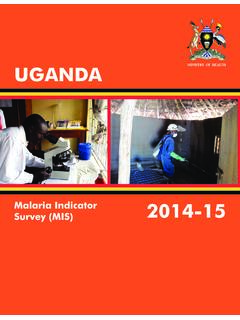

![Swaziland Demographic and Health Survey 2006-07 [FR202]](/cache/preview/e/9/6/6/b/1/5/2/thumb-e966b152d2377b66a5a36be0eaa2b17b.jpg)
![Ethiopia Demographic and Health Survey 2016 [FR328]](/cache/preview/b/4/6/c/8/f/a/7/thumb-b46c8fa7d3e1cb3435d90bf577845b98.jpg)
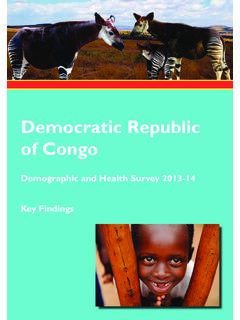


![Gender Equality and Women's Empowerment in India [OD57]](/cache/preview/0/7/f/d/9/7/1/6/thumb-07fd97166dd92c7359501888c42037d3.jpg)

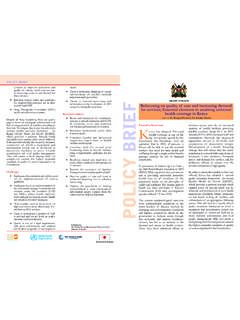

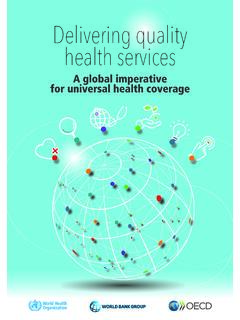
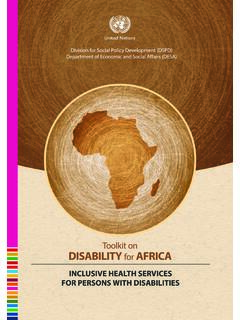

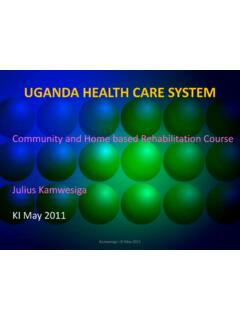
![Kenya Demographic and Health Survey 2014 [FR308]](/cache/preview/8/1/e/d/8/8/e/0/thumb-81ed88e0200e50494b93b6f6e3131997.jpg)